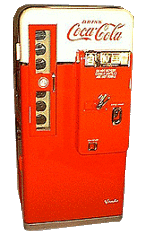 Or rather, what in the world goes on when a writer for almost any type of publication - whether mainstream or not - writes about anything that remotely touches on science?
Or rather, what in the world goes on when a writer for almost any type of publication - whether mainstream or not - writes about anything that remotely touches on science?
Often times what comes out instead is "science," a stream of misapplied, poorly understood concepts. Maybe it's writing for deadlines, or maybe it's just the overall scientific illiteracy that grips many, but there is no doubt that the world needs more reporters that know the very basic scientific ideas. Otherwise we are all faced with an every growing body of articles and blog posts that will only reinforce the already shaky scientific foundation that many apparently have. (I have already noted recent media errors in articles on friction and gravity.)
My latest gripe? The May 12, 2008 issue of Newsweek contains a very positive article about students at MIT trying to lower energy costs wherever "energy hogs" exist, with a major hog - your typical vending machine - one of the main targets of their energy-waster-busters attention. Unfortunately, the amount of energy consumed by an average vending machine is incorrectly stated. According to Newsweek "The average soda dispenser consumes 3,500 kilowatts a year." As anyone who actually pays utilities should know, a kilowatt is a rate of energy use (it's 1000's of joules/sec). The actual unit of energy used is then found by multiplying the Rate of energy use x running time, i.e. the kilowatt-hour (kW-hr). One kW-hr is the amount of energy used by a device running at a rate of 1 kW for 1 hour. This energy amount is typically how your electric bill is determined by the electric company that services your home. The price per kw-hr will vary depending on the area of the country, the source of the electric company's energy, and time of year. Current rates for my area are approximately 17cents/kw-hr.
Back to MIT. The writer of the Newsweek article clearly meant to say 3,500 kW-hours a year. This is a pretty typical figure for a vending machine, which often run at 400 kW . To see this, calculate the total hours in a year and multiply x 400: 24 x 365 x 400 = 3504 kW-hr. This figure is approximately 4 times the energy use of a basic household refrigerator.
Energy governors that employ motion-sensors to cut vending machine power usage have been around for awhile. Machines throughout Austin , TX, were retro-fitted with these devices back in 2003, with a big realization in energy savings. Then there's the solar-powered vending machine, with a motor powered by photovoltaics running at 80 W.
So, cutting down your kilowatts and the actual time the machine is running at peak power rating is the best way to get your vending greener.